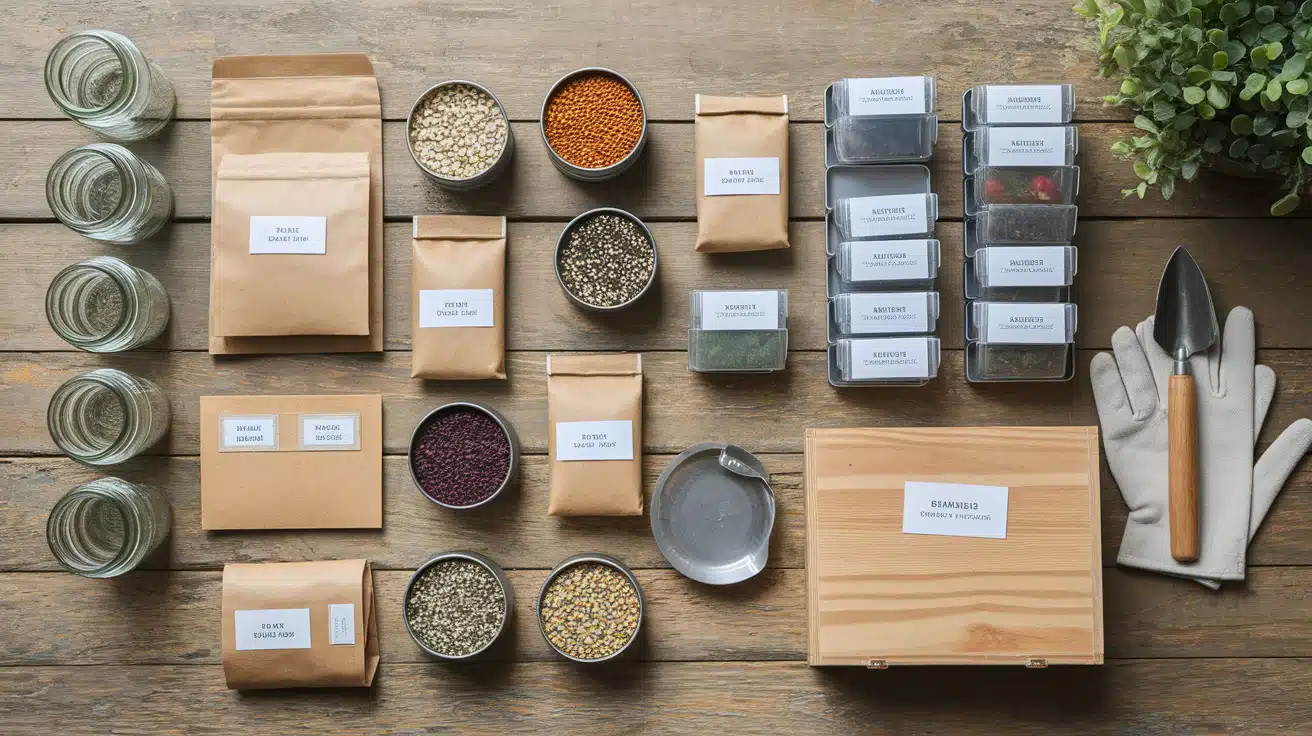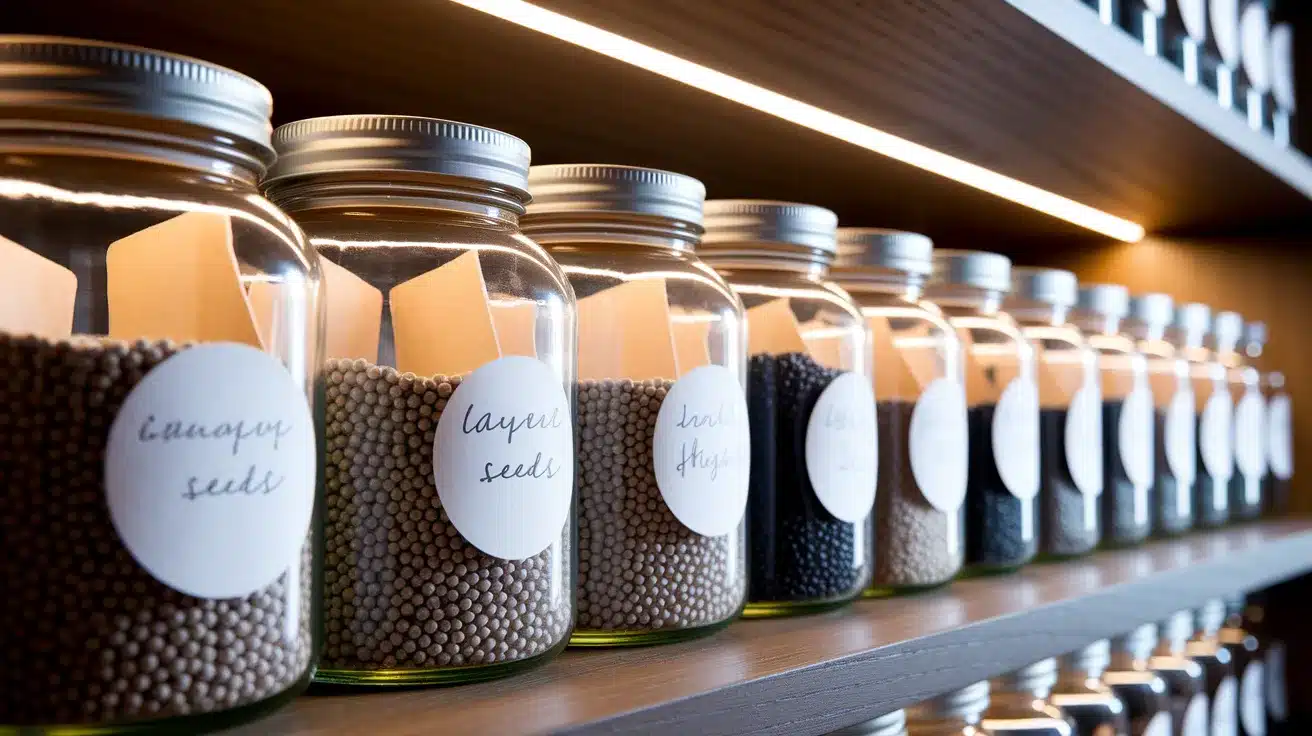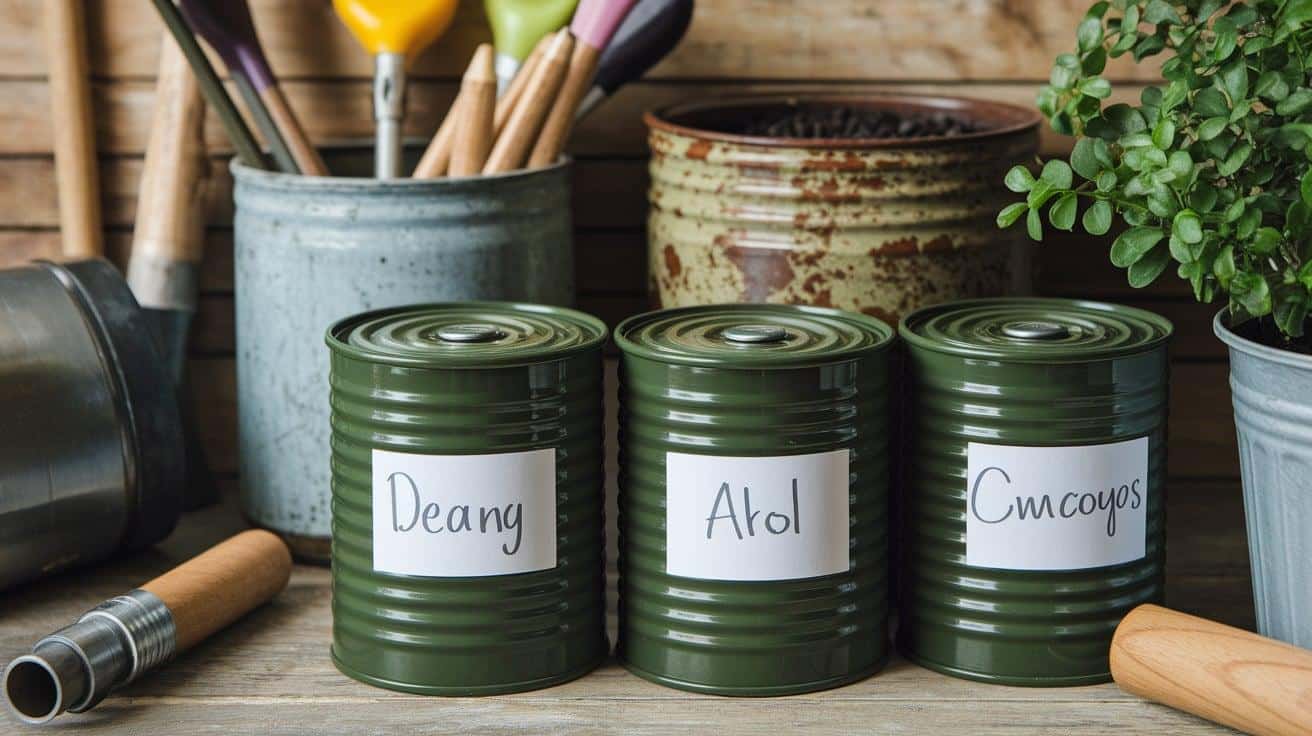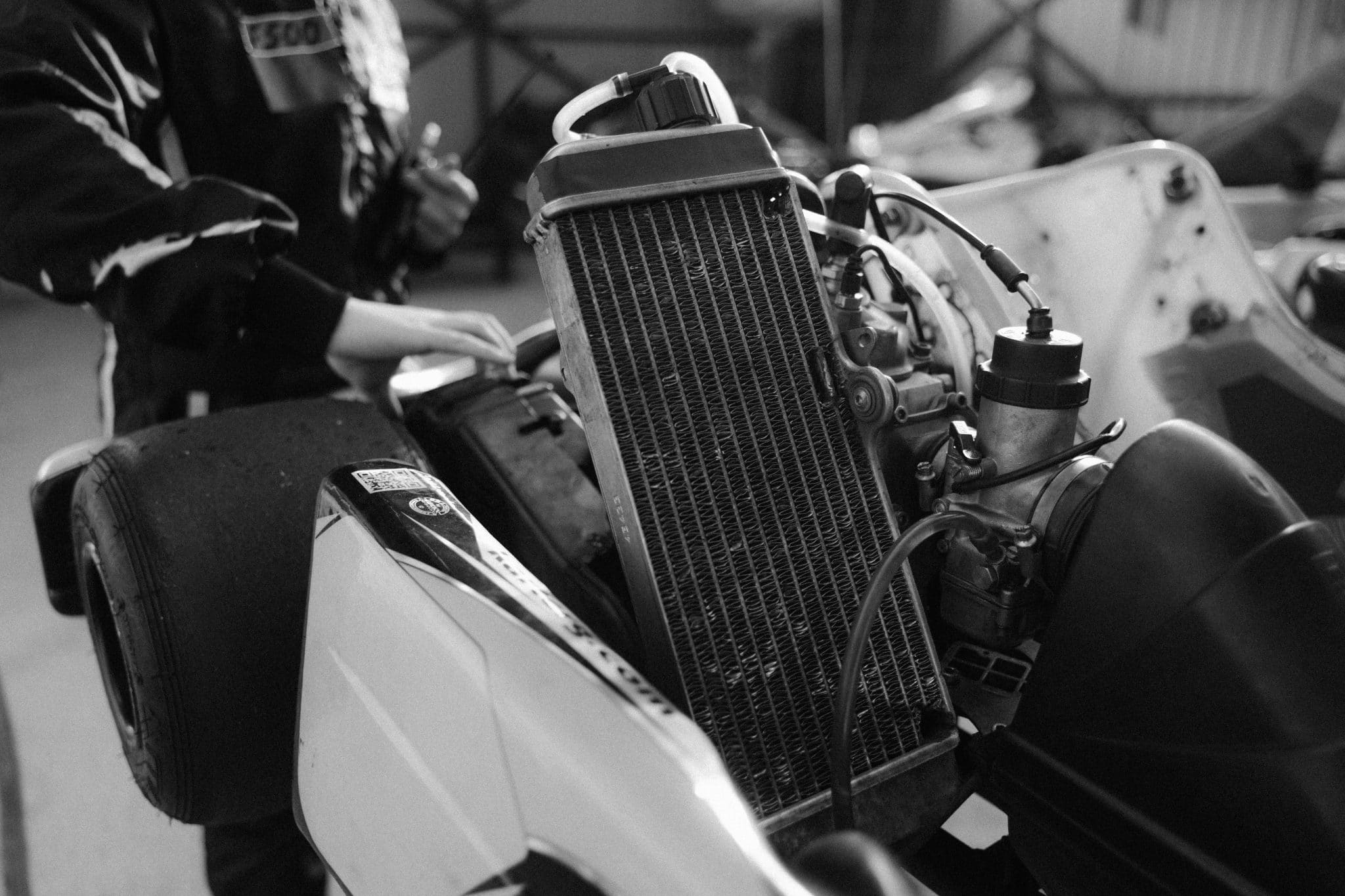Seeds need proper care. Does your current storage method keep your seeds healthy and ready to sprout? Many gardeners lose seeds to moisture, heat, and poor organization.
I’ve found that good seed storage can make or break your garden’s success. With the right methods, seeds stay fresher longer and yield better results when planting time comes.
What if you could boost your seed success rate with simple household items? That’s exactly what this guide offers – 13 tested storage ideas that work for collections large and small.
Try these methods today to keep your seeds in top condition. Your future garden (and wallet) will thank you when those seeds grow into strong plants next season.
The Importance of Storing Seeds Correctly
Poor seed storage can harm your gardening efforts. When seeds sit in damp places, they often rot or grow mold. This ruins their ability to sprout later.
Seeds work like tiny sleeping plants. They need the right conditions to stay alive until planting time. Think of your seeds as living things that require care, even while dormant.
The best way to keep seeds fresh is in cool, dark, and dry spots. This stops them from starting to grow too early or losing their strength.
For the longest seed life, aim for these storage conditions:
- Temperature: 32°F to 41°F (like a refrigerator)
- Humidity: Below 50% (drier than most homes)
- No direct light (which can trigger growth)
- Limited air exposure (which can bring moisture)
Good storage means better plants next season. It saves you money and helps ensure your garden grows as planned.
13 Smart Seed Storage Ideas You Need to Try This Season
Here are smart and practical seed storage ideas to keep your seeds fresh, organized, and ready for planting. Whether you’re a beginner or a seasoned gardener, these solutions will help protect your collection and boost your garden’s success.
1. Glass Mason Jars
Mason jars protect seeds from air and moisture with their tight seals. The clear glass lets you see your seeds without opening them. Add small silica packets inside to keep things extra dry. These jars work well for both short and long-term seed keeping.
-
Why It’s Great: Airtight and moisture-proof, ideal for preserving seeds.
-
Pro Tip: Add silica gel packets for extra moisture protection.
-
Recommended Product:Ball Mason Jars with Airtight Lids (32 oz set)
2. Plastic Storage Bins with Dividers
These bins help sort seeds by type, season, or plant family. The dividers prevent mixing and make finding specific seeds easier. Use a marker to label each section clearly. The solid plastic shields seeds from light and pests while staying budget-friendly.
-
Why It’s Great: Perfect for organizing various seed types.
-
Pro Tip: Use labeled envelopes inside to prevent mixing.
-
Recommended Product:4×6 Photo Keeper Storage Box
3. Seed Storage Envelopes
Paper envelopes let seeds breathe while keeping them organized. They’re thin enough to store many varieties in a small space. Write planting details directly on each envelope for quick reference. These work best for short-term storage when kept in a dry container.
-
Why It’s Great: Lightweight and easy to label, perfect for seed saving.
-
Pro Tip: Use acid-free paper to prevent seed degradation.
-
Recommended Product:Paper Seed Envelopes with Label Stickers
4. Repurposed Ice Cube Trays
Ice cube trays separate small seed batches neatly. Each compartment holds enough seeds for a single planting space. The trays stack efficiently in drawers or boxes. Cover with plastic wrap and store in cool, dark places for best results.
-
Why It’s Great: Perfect for organizing small quantities of different seeds.
-
Pro Tip: Cover trays with plastic wrap to keep air out.
-
Recommended Product:OXO Silicone Ice Cube Tray
5. Metal Tins with Lids
Metal tins block light completely and resist damage from pests. Their tight lids create good seals against moisture. Small tins fit easily in refrigerators for optimal storage. The metal walls prevent temperature swings that can stress seeds over time.
-
Why It’s Great: It protects seeds from moisture and pests.
-
Pro Tip: Ensure lids are tightly sealed to block humidity.
-
Recommended Product:Round Metal Storage Tins with Lids
6. Vacuum-Sealed Bags
Vacuum sealing removes air that could carry moisture to your seeds. These bags take up very little space when sealed flat. You can write directly on the bags with permanent markers. They work well for long-term storage in freezers or cool basements.
-
Why It’s Great: Removes air, preventing oxidation and mold.
-
Pro Tip: Store sealed bags in a cool, dark location.
-
Recommended Product:FoodSaver Vacuum Sealer Bags
7. Repurposed Spice Jars
Old Spice jars offer perfect small-batch seed storage without extra cost. Their shake-or-pour lids make dispensing tiny seeds easier during planting. The compact size fits well in crowded fridges. Clean thoroughly with soap and water before using for seeds.
-
Why It’s Great: Budget-friendly and eco-conscious option for small seed batches.
-
Pro Tip: Sterilize jars before use to prevent contamination.
-
Recommended Product:Chef’s Star Glass Spice Jar Set
8. Small Plastic Bead Organizers
These clear boxes have many tiny compartments, perfect for different seed varieties. Their snap lids stay secure but open easily when needed. The portable size works well for bringing seeds to community exchanges. Label each compartment lid for quick identification.
-
Why It’s Great: Ideal for sorting and categorizing small seed varieties.
-
Pro Tip: Add a small desiccant packet to control humidity.
-
Recommended Product:Darice 32-Compartment Bead Organizer Box
9. Ziplock Bags with Desiccants
Ziplock bags seal out moisture when properly closed. They’re flexible and take minimal space in storage areas. The clear plastic makes seed identification easy. Adding desiccant packets pulls moisture away from seeds, extending their shelf life substantially.
-
Why It’s Great: Quick and easy storage solution for small seed batches.
-
Pro Tip: Always include a desiccant to maintain low humidity.
-
Recommended Product:Ziploc Freezer Bags with Double Seal
10. Binder with Plastic Sleeves
This system keeps seed packets visible and protected in plastic sheets. The binder format lets you flip through varieties like a book. Add divider tabs for organizing by plant types. Perfect for planning next season’s garden while browsing your seed collection.
-
Why It’s Great: Allows easy sorting and visual organization of seed packets.
-
Pro Tip: Use labeled sleeves to sort by plant type or season.
-
Recommended Product:Avery Heavy-Duty Binder with Seed Pocket Sleeves
11. Ammo Cans for Long-Term Storage
Ammo cans have rubber gaskets that create excellent moisture barriers. Their sturdy build protects seeds from physical damage and pests. The metal construction blocks all light. Their latch locks keep contents safe from curious children or pets.
-
Why It’s Great: Durable and moisture-resistant, perfect for bulk seeds.
-
Pro Tip: Place packets in ziplock bags before storing in the can.
-
Recommended Product:MTM Ammo Storage Can
12. Repurposed Mint Tins
Mint tins fit in pockets for mobile seed collecting. Their hinged lids stay attached so they’re hard to lose. The metal construction blocks light completely. Their small size works perfectly for rare seeds or limited quantities of special varieties.
-
Why It’s Great: Compact and ideal for storing small seed quantities.
-
Pro Tip: Label tins with the seed variety and collection date.
-
Recommended Product:Altoids-Style Tin Storage Box
13. Mylar Bags for Long-Term Preservation
Mylar blocks light, air, and moisture better than most materials. These bags can keep seeds viable for many years when properly sealed. They resist punctures and tears during handling. Many preppers use these for emergency seed banking with great success.
-
Why It’s Great: Blocks light, moisture, and air for extended seed longevity.
-
Pro Tip: Add oxygen absorbers to maintain freshness.
-
Recommended Product:ShieldPro Mylar Bags with Oxygen Absorbers
Essential Tips for Storing Seeds
1. Use Airtight Containers
Keeping air out is key for seed health. When seeds get too much air, they start to break down faster. Airtight jars stop this process and keep moisture at bay. Proper containers make seeds last twice as long in many cases.
2. Label and Date Seed Packets
Most seeds lose strength over time. Knowing when you stored them helps you use the oldest ones first. Clear labels also prevent mix-ups between similar-looking seeds. Your future self will thank you for this simple step.
3. Control Humidity and Temperature
Seeds stay dormant longer in cool, dry places. Too much heat or moisture wakes them up too soon. This uses up their stored energy before planting. A steady, cool setting extends their life span by years.
4. Use Desiccants to Absorb Moisture
Even sealed containers can hold hidden moisture. Desiccants pull this water away from your seeds. These small packets work like tiny sponges to keep the air inside your storage extra dry.
5. Avoid Plastic Bags for Long-Term Storage
While handy for short times, plastic bags often let some moisture through. Over months, this can hurt seed health. The thin walls also don’t block light well. Choose sturdier options for seeds you plan to keep past one season.
Best Practices for Long-Term Seed Storage
Rotate Seeds Regularly
Use your oldest seeds first to keep your collection fresh. Seeds lose strength over time, even with perfect storage. Check dates when planting season starts, and put older packets at the front of your storage system. This simple habit ensures you plant seeds while they still have good growth power.
Test Germination Rates
Not sure if older seeds will still grow? Test them before planting season. Place ten seeds on a damp paper towel, fold it, and put it in a plastic bag. Keep it warm and check after a week. If fewer than five sprout, you may need fresh seeds. Testing saves garden space from being wasted on weak seeds.
Avoid Freezing Improperly
While freezing can extend seed life, it must be done right. Seeds frozen with moisture inside can crack and die when ice crystals form. Always dry seeds thoroughly and seal them in moisture-proof containers before freezing. For best results, use vacuum-sealed bags or jars with tight-fitting lids and desiccant packets.
Conclusion
Proper seed storage makes all the difference in your garden’s success. With these methods, you can find an option that fits your needs and budget.
Remember three key points for keeping seeds healthy: maintain cool temperatures, control moisture, and limit light exposure. Whether using mason jars, fabric pouches, or egg cartons, these principles apply to all storage methods.
What’s your next step? Choose one storage idea from this list and improve how you keep your seeds today. Even small changes in storage can lead to better germination rates next season.
I’d love to hear which method works best for you. Share your seed storage tips or questions in the comments section below. Your experience might help fellow gardeners save their precious seeds too!






















